Review Article 
 Creative Commons, CC-BY
Creative Commons, CC-BY
Role of Dietary Fiber in Maintaining Well-Being, Critical Review
*Corresponding author: Bruno Riccardi, Biologist freelancer, 56022 Castelfranco di Sotto (Pisa), Via dei lazzeri, 33, Italy.
Received: January 11, 2025; Published: January 21, 2025
DOI: 10.34297/AJBSR.2025.25.003335
Abstract
The complexity of natural phenomena represents the main obstacle to their understanding, so that scientific research must divide them into the individual aspects that contribute to their occurrence. This depends on the properties of the phenomena themselves, and on the numerous factors that contribute to their occurrence, which are the result of events and forces that act synchronously, and often do not have a material consistency and do not present physically appreciable manifestations. Therefore, it is impossible to recognize them objectively with the limited sensory systems at our disposal. And this is one of the reasons, if not the most important one, that leads us to study only single aspects of the events that we observe and that attract our attention, and are those most easily recognizable and measurable. With this epistemological premise, I introduce the topic of this article, which describes one of the most controversial aspects of biomedical research, the recognition of the factors that determine the state of well-being or that cause disease. The article is about the intestinal ecosystem and the search for factors that lead to its balance or disorder, and aims to demonstrate how research that focuses on a single aspect can lead to erroneous conclusions. In this case the order of magnitude of the error is twofold, the first is to attribute to a single organ, in this case the intestine (neglecting all the others), the state of well-being or illness of individual people; the second is to attribute the etiological cause of all diseases to the imbalance of the microbiota present in the intestine or alternatively to the lack of fibres taken with food. This article, after having criticized the two approaches, presents a description of dietary fibres in a holistic conception, which calls the attention of scholars to observe and describe phenomena in the completeness of their occurrence.
Keywords: Holistic conception, Foods and life style, Microbiome and immunity, Dietary fiber and Healthy, Evolution of the microbiome
Introduction
Well-being is the fundamental condition that indicates a state of good health that characterizes the life of an individual, and is the result of multiple factors, the most important of which are: Genetic, environmental, behavioural factors. The tendency of many researchers to focus their studies on single factors that affect well-being is a conceptual error that leads to misleading conclusions. When evaluating the results of scientific research, it is essential to adopt a holistic and non-partisan approach, because all the factors that contribute to the observed effect must be examined. Of the three factors mentioned above, the only one that can be changed and on which we can act is the behavioural one. We know in fact that the genetic factors of all living beings depend on the assortment of parental hereditary characteristics. Just as environmental factors depend largely on sidereal and atmospheric events that we cannot control, even if in this last part of the century, man is making a great effort in the climatic upheaval that he has produced with pollution. The behavioural factor remains, the only one that can be changed because it depends entirely on the habits and lifestyles that every human being knowingly adopts. In this article we are going to focus our attention on the nutritional effects of dietary fiber, but with out neglecting other factors. As previously stated, in approaching the study of dietary fiber on the well-being of individuals, we will adopt the holistic method. of the effects of dietary fiber on health with a holistic approach? The fundamental factor to consider is the relationship between man and environment, because it is not possible to isolate individuals from their ecosystem, it is clear that to live at the North Pole, or in the African savannah it is necessary to adopt completely different lifestyles and diets, just as a person who carries out heavy work, compared to someone who follows a sedentary lifestyle, has different nutritional needs. Taking into account all the factors we have discussed, let’s take a closer look at lifestyle, the role of food, and the composition of the intestinal microenvironment.
Lifestyle and the Role of Food
All living beings need energy to survive, which is supplied to them in different ways, either directly from sunlight, water and carbon dioxide, as in autotrophic organisms (autotrophic plants and bacteria), or by the intake of food in the form of animal or plant foods, as in heterotrophs, or finally by directly using the nutrients supplied by the hosts, as in commensalism, symbiosis and parasitism.
Autotrophs
They feed on simple resources such as sunlight, carbon dioxide (CO₂) and water (H₂O). These organisms do not depend on other living things for their food, but are able to synthesize the organic compounds necessary for their survival through processes such as photosynthesis or chemosynthesis. Autotrophic bacteria: Some bacteria, such as those that live in extreme environments (for example in the deep sea), use chemical energy to synthesize the necessary nutrients, in a process known as chemosynthesis.
Heterotrophic Organisms
unlike autotrophs, they feed by taking organic substances from other living things (animals or plants) to obtain the energy they need. Heterotrophs include a wide range of organisms:
a) Animals: Animals feed on other living things (plants or animals) to obtain the necessary nutrients. They can be herbivores (eating plants), carnivores (eating other animals), or omnivores (eating both plants and animals).
b) Decomposer fungi and bacteria: These organisms obtain energy by feeding on Plants leaves, branches, roots and other parts of plants that have fallen or decayed, animal carcasses, which are broken down into simpler nutrients and other decomposing biological substances.
c) Plants: Plants are the main example of autotrophs. They use photosynthesis to transform solar energy into chemical energy, producing sugars and oxygen as a byproduct.
Symbiotic Relationships
These are forms of interaction between organisms that involve the mutual transfer of energy and nutrients. An example is mycorrhiza, a symbiosis between fungi and plants, in which the fungus helps the plant absorb water and nutrients, while the plant provides the fungus with sugars.
a) Commensalism: In this relationship, one organism benefits from the nutrients or protection provided by another organism. A classic example of commensalism is that of woodpeckers that feed on food left by other animals.
b) Parasitism: In this relationship, one organism (the parasite) benefits by feeding at the expense of another organism (the host), which generally suffers harm. A common example of parasitism is that of intestinal worms in animals, which feed on nutrients present in the intestine of the host.
In any case, there is a very close and fundamental link, which transversally concerns all living beings, between nutritional needs, the type, quality and quantity of nutrients taken in, and the preservation of a balanced relationship with the environment that hosts them, for the homeostatic maintenance of general well-being. Over the course of millions of years of biological evolution, this bond has increasingly diversified, taking on the infinite forms we know in the different ecosystems present on our planet. The current diet of every living being, from bacteria to humans, is the result of evolution, natural selection and mutual adaptation between available food resources and their use for nutritional purposes [1]. As far as our species is concerned, eating habits have changed a lot, in relation to the different ways of obtaining food, from the Neolithic to the present day. From his appearance until the beginning of the Neolithic, about 10,000 years ago, man lived on game, vegetables, dried fruit and, when available, fresh fruit. He was in fact a hunter/gatherer and his daily life was based on a very high energy expenditure (Figure 1).
In the contemporary era, food production has had an exponential development. The production of traditional foodstuffs (flours, oils, jams, butter, cheese...) that were once obtained by hand are now produced with industrial methods and with the use of conservation, flavour enhancement and freezing processes, which have allowed us to offer a large number of fresh foods in the form of preserves or frozen foods (fruit, vegetables, meat, fish...) [2-4]. In parallel with the change in production methods, eating habits have changed, from a natural diet, we have moved on to an industrial one, obtained with production processes that alter and denature nutrients, but increase their quantitative yield to then be preserved or improved in the organoleptic aspect. This has produced negative repercussions on our state of well-being, denounced by the extraordinary increase in metabolic diseases, from obesity, to diabetes and cardiovascular diseases, which are the three major metabolic scourges with which humanity must confront. If we look closely, many of the degenerative pathologies that characterize our century are of food origin or rather are caused by the unnatural and poor quality of the food we ingest daily, which is excessively refined, devoid of fiber and essential nutrients inactivated by the production process. The addition of pesticides, preservatives and colorants, flavour modifiers, are the primary cause of metabolic dysfunctions, which have assumed pandemic proportions. Obesity, celiac disease, diabetes, metabolic syndrome, are attributable not only to genetic factors, but also to poor food quality [5]. Food additives are substances that are added to foods to improve their preservation, appearance, taste, and shelf life. Some of these additives, although approved for use, can have negative effects on our bodies if consumed in high amounts or over long periods of time. Here are some of the most common additives and the potential risks associated with them:
a) Pesticides: Pesticides are used to protect crops from insects, but they can remain on produce even after it has been harvested. Scientific studies have suggested that chronic exposure to pesticides can alter hormone balance, promote inflammation, and impair metabolism, contributing to diseases such as obesity and diabetes.
b) Preservatives: Preservatives, such as nitrates and nitrites (used to preserve meat and fish), have been associated with an increased risk of cancer and other metabolic diseases. Some studies have suggested that excessive intake of preservatives can negatively affect fat metabolism and the body’s ability to regulate blood glucose levels.
c) Artificial Colours: Synthetic colours, such as azo dyes, are often used in foods and drinks to make them more appealing. Some studies have suggested that exposure to certain colours can affect behaviour and metabolism, increasing the risk of disorders such as hyperactivity and obesity.
d) Flavor Modifiers: Some additives that improve the flavor of foods (such as glutamates and artificial sweeteners) can alter the mechanisms that regulate satiety and blood sugar levels, contributing to overeating and obesity.
These negative factors have been addressed through the use of food supplements and functional foods, with the aim of adding those fundamental nutrients that modern foods cannot provide. The supplements and functional foods on the market boast contents of nutrients and mineral salts essential for our health, which in reality they do not contain or are insufficient and in a non-assimilable form. A definition of functional food is proposed by EUFIC (European Council Food Information) [6]. “A food can be considered functional if it demonstrates positive effects on one or more specific functions of the organism, beyond the normal nutritional effects, so as to improve the state of health and well-being and/or reduce the risk of disease.” https://www.eufic.org/it Another fundamental aspect for our state of health, compromised by an inappropriate diet, concerns reduced immune defences. This condition has favoured the onset of degenerative pathologies and infectious diseases with ever greater frequency, which have now assumed pandemic proportions.
Nutritional Status and Immune Defences
Our immune defences depend entirely on our innate and acquired immune systems, which must be maintained by following appropriate hygiene and nutritional standards. Nutrition plays a fundamental role in this aspect, as it has been known since ancient times, the aphorism of Hippocrates of Cos (460-337 BC):”Let Food be thy Medicine and Medicine be thy Food”- sums up this ancient knowledge, which an infinite number of studies have confirmed. The fundamental importance of food should not make us underestimate the other factors that come into play, such as innate and acquired immune defences. As regards food, specific foods are essential to improve the immune defences, such as vitamins and some mineral salts, furthermore the proper functioning of the Gut-Associated Lymphoid Tissue (GALT) [7], which is a component of the Mucosa-Associated Lymphoid Tissue (MALT). This is an integral part of the immune system present in the intestine, and has the task of protecting us from the invasion of pathogens (Figure 2). The physiological function of absorption occurs in the intestinal mucosa, which forms the permeable barrier through which food is absorbed into the body. If the intestinal barrier becomes fragile and permeable, it exposes the intestine to infections, since the vast majority of infectious agents and pathogens that invade the human body use this entry route.
The Gut Microbiota an Ingenious Solution
In recent times, another fundamental factor has been emerging that contributes for maintaining intestinal functions in balance and consequently the general state of health, this is the intestinal microbiota. The intestinal microbiota has been given a preponderant importance in the study of the state of global well-being, so much so that a new discipline has arisen, Microbiomics [8,9]. The Microbiota is made up of the complex of microorganisms that live in symbiosis within the organs of all animal and plant species. Why and how did symbiosis develop? Symbiosis is a form of mutualistic relationship through which two or more living species derive mutual benefit from their coexistence by exploiting their metabolism. In the case of the vertebrate microbiota, both coexisting species obtain different advantages. Bacteria find in the host environment the optimal conditions of temperature, pH, and nutrients they need, in homeostatic conditions that guarantee their survival and reproduction. The bacteria that inhabit the intestines of vertebrates belong to different species. With symbiosis, bacteria have gained an enormous advantage over their ancestral relatives who live freely in the external environment, which is subject to continuous changes and forces them to constantly adapt their metabolism. On the other hand, the organisms that host the microbiota also benefit greatly from their presence as it provides substances that they would otherwise not be able to produce. Among these are some essential vitamins and nutrients extracted from fruit and plant foods. The extraction and absorption of these nutrients that are enclosed within the cell walls formed by fibers, become accessible thanks to the action of the host bacteria that are able to decompose them (Figure 3). An additional benefit derived from the symbiosis is the immune tolerance that the hosts have developed towards their microbiota which reciprocates by producing immunostimulating substances for the host, the GALT. From what has been said we can summarize in a single formula the most important factors for well-being which are:
Intestinal epithelium+mucosal immune system+intestinal microbiota+ dietary fiber
Morphofunctional apparatus that must be maintained in homeostatic balance. The intestinal epithelium, mucosal immune system, gut microbiota, and dietary fiber are all key components of our digestive system that play a crucial role in maintaining overall health, especially in pathogen protection and immune balance. These systems work together in a complex network, influencing digestion, immune protection, and metabolic health. Let’s look at how each of these components interact and contribute to gut health.
Intestinal Epithelium
The intestinal epithelium is the cellular barrier that lines the intestines and plays a key role in digestion and nutrient absorption. It is made up of cells called enterocytes that form a protective barrier against pathogens and harmful substances that might enter the body.
Key Functions of the Intestinal Epithelium:
a) Nutrient absorption: Enterocytes are responsible for absorbing nutrients, such as carbohydrates, proteins, fats, vitamins, and minerals.
b) Physical barrier: The intestinal epithelium acts as a barrier against pathogens, preventing them from crossing the intestinal lining and invading the body.
c) Mucus production: Epithelial cells produce mucus, which helps protect the intestinal surface and facilitates the passage of food along the intestines.
d) Communication with the immune system: The intestinal epithelium is also involved in regulating the local immune response, as it interacts with immune cells found in the lamina propria (layer of connective tissue under the epithelium).
Mucosal Immune System (MALT)
The mucosal immune system (Mucosa-Associated Lymphoid Tissue, MALT) is a key component of the immune system found in the mucosal membranes of the body, including the intestines, respiratory tract, and genitourinary tract. The MALT is composed of a network of lymph nodes, adenoids, tonsils, and Peyer’s patches in the intestines, which interact with the gut microbiota and play a crucial role in protection against pathogens and immune tolerance.
Main Functions of the Mucosal Immune System:
a. Defence against pathogens: The MALT protects the body from bacteria, viruses, and other pathogens that may enter the body through the intestinal tract.
b. Immune tolerance: The mucosal immune system is also important in preventing excessive immune responses against beneficial microorganisms or nutrients. This process is essential for preventing conditions such as allergies or autoimmune diseases.
c. Interaction with the microbiota: MALT cells constantly monitor the gut microbiota, activating appropriate immune responses to maintain the balance between protection and tolerance.
Gut Microbiota
The gut microbiota is the set of bacteria, fungi, viruses, and other microorganisms that populate the human intestine. Each person has a unique microbiota, which plays a central role in digestion, immunity and metabolic health. The gut microbiota is responsible for the fermentation of certain nutrients that our body cannot digest on its own, such as dietary fiber.
Main Functions of the Gut Microbiota:
a. Fermentation of dietary fiber: The gut microbiota is able to ferment indigestible dietary fiber, producing Short-Chain Fatty Acids (SCFA), such as butyrate, which are used as an energy source by intestinal epithelial cells and have anti-inflammatory effects.
b. Protection against pathogens: The gut microbiota helps prevent pathogen infections by competing for space and resources in the intestinal tract.
c. Modulation of the immune system: The gut microbiota has a direct impact on the immune system, influencing cytokine production, immune cell maturation and immune tolerance.
d. Synthesis of vitamins and nutrients: Some bacteria in the microbiota synthesize B vitamins and vitamin K, and participate in the synthesis of other beneficial nutrients.
Dietary Fiber
Dietary fiber is the main topic of this article to which we will dedicate an entire paragraph. These four components work together in a complex intestinal ecosystem that supports the health and general well-being of the body: In order to achieve a holistic vision, we must frame them as a whole since they act synergistically as part of a single ecosystem (Figure 4).
Unfortunately, the prevailing method in the study of natural phenomena is the one we have repeatedly criticized, that of the arbitrary separation of the individual factors causing them, neglecting the substantial uniqueness resulting from their synergistic effect. With this simplistic approach, the microbiota has been attributed the role of main responsible for maintaining the state of health, while its imbalance would be the etiological factor of a myriad of infectious, chronic and degenerative pathologies. The microbiota is the complex of microorganisms that live along the entire intestinal tract, and in other organs, it includes various microbial forms, bacteria, viruses, fungi, unicellular parasites and in some cases multicellular (worms). Their number is enormous, there are billions of individuals that have exceed the number of cells in our body. It presents a high variability linked to eating habits, gastrointestinal pathologies, antibiotic therapies, alterations of the intestinal mucosa, and genetic factors, Figure 4.
A huge amount of clinical research has been devoted to the study of the microbiota, with dedicated journals and websites: MetaHIT (http://www.metahit.eu/) and the Human Microbiome Project (http://hmp-dacc.org/), https://microbiomejournal.biomedcentral. com/ [10]. As previously has been mentioned, the microbiota has been recognized as the pathogenetic cause of many diseases, both intestinal and of other systems. This is an example of how fragmented and super-specialized scientific research, when it loses sight of all the factors that have a cause in the study of a phenomenon, leads to absurd and always antithetical hypotheses [11-13] Consequently, the method of investigation in the theoretical and clinical study of the most frequent pathologies is also based on the examination of individual epiphenomena which assume the causal pathogenetic role (Table 1). Thus, from time to time, individual factors are called into question, such as nutrigenomic, microbiomics, oxidative stress, nutritional, environmental, behavioural, etc. rather than taking into account all the factors with a holistic approach [14-16]. Current microbiome study methods, such as metagenomics, metatranscriptomics, metaproteomic and metametabolomics, available biomedical/computational tools can accurately characterize (although with some limitations) changes in the composition and spectrum of function/activity of major microbial communities [17]. The exponential growth of studies on the microbiota, and their media overexposure for consumerist purposes, has stimulated consumer interest on this topic, and has promoted the growth and number of probiotic supplements presented on the market. There are countless supplements based on multivitamins, lactic ferments, dietary fibers, etc. with the most imaginative formulations and indications.
Dietary Fiber and the Microbiota
We firmly believe that in the clinical and theoretical study of well-being conditions and pathologies, the holistic approach should be chosen as the method of choice, however in this article we only examine the role of dietary fibres and their relationship with the microbiota also from an evolutionary point of view [18].
Definition
The Food and Nutrition Board defines dietary fiber this way (2000):
[ https://www.nationalacademies.org/fnb/food-and-nutritionboard ]
Dietary Fiber: Non-digestible carbohydrates found in plant foods. And it distinguishes it from.
Added Fiber: Artificially added, non-digestible carbohydrates that have beneficial effects on human health. Also called Functional Fiber.
Total Fiber: Sum of dietary fiber and added fiber.
Dietary fiber provides material that is fermentable and/or capable of influencing intestinal contents.
With modern technologies it is possible to prepare functional foods, containing particular types of fibre and selected microorganisms (probiotics and prebiotics, together defined as Symbiotics).
Dietary fibers are divided into:
Soluble Fibers: Gums, Mucilages, Pectins, Hemicelluloses, are present above all in oats, barley, legumes and potatoes.
Insoluble Fiber: Lignin, Cellulose, Resistant Dextrins are found in most other grains and vegetables; wheat bran is very rich in them.
Fiber Properties: They have the ability to retain water, increase the mass of intestinal contents and facilitate its progression and emptying. Adsorption capacity, fiber acts as an adsorbent of various substances, such as steroids and fats, increases their faecal excretion, with the effect of reducing lipemia, on the other hand it can limit the absorption of other nutrients. Fiber is not digested in the small intestine and passes, almost unchanged, into the large intestine. Fiber consumption slows gastric emptying and intestinal absorption processes and increases the feeling of satiety. Only 70-80% of the fiber is degraded in the intestine. It has the effect of increasing the fecal mass resulting from the increase in bacterial mass. Fiber is not digested by enzymes secreted by humans, but is degraded by bacterial flora.
Physiological Effects of Fiber: The effects of dietary fiber in the intestine can be summarized as follows [19-20]:
a) Increasing mass and bacterial fermentation
b) increasing the activity of bacterial glycolytic enzymes.
c) increasing the water holding capacity.
Uses of Dietary Fiber: Dietary fiber is used as the main, if not the only, factor in the treatment and prevention of a considerable number of diseases, including constipation, diverticulosis, diabetes, hyperlipidaemia and as an adjuvant in obesity and peptic ulcer. Protective effects on the onset of colon cancer are also unanimously reported (Figure 5). Fibers have the disadvantage of preventing, to a certain extent, the absorption of some vitamins, minerals and drugs, especially in diets poor in these nutrients. Bacteria are able to metabolize fiber polysaccharides, producing several metabolites, including gases (e.g. H2, CH4, CO2), lactate, succinate, and Short-Chain Fatty Acids (SCFA). The most abundant SCFAs are acetate, propionate and butyrate, which are used by intestinal mucosal cells as energy sources, with butyrate being the preferred energy substrate by colonic enterocytes. Dietary fibers are the main source of energy for gut bacteria. They differ in their physicochemical properties, effects on the gut, and fermentation characteristics. The diversity of carbohydrates and associated molecules in fiber-rich foods can have a major influence on the composition of the microbiota and the production of bioactive molecules, for example, SCFAs and phenolic acids can influence the functions of other organs, including the gut, liver, adipose tissues, and brain has been recommended to counteract increasing obesity and other health problems.
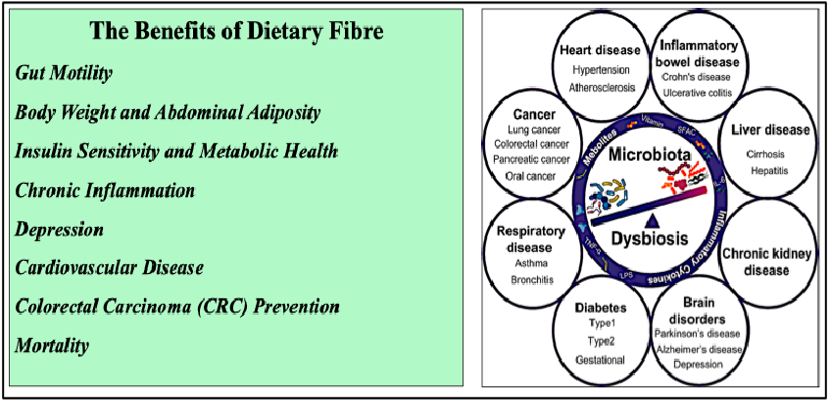
Figure 5: Beneficial effect of Fiber and pathogenic role of Dysbiosis.
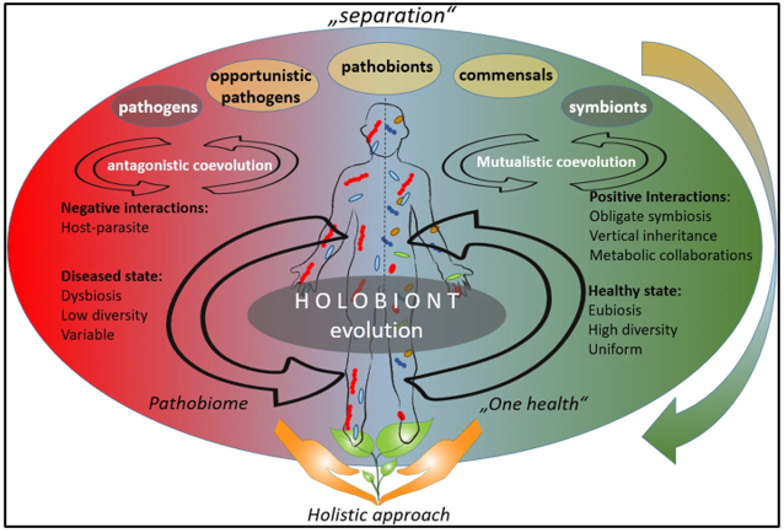
Figure 6: Holistic view of the relationship between living beings and their environment.
The intake of specific fibers and plant foods can influence the metabolism of the microbiota [21]. As might be expected, in vitro studies show great individual variability in the response of the gut microbiota to different fiber intakes, making it difficult to predict which foods or food components will have the greatest impact on bioactive molecules in the colon of individuals. Even in the study of dietary fibers and in the literature on the subject we must record the tendency to overexposure of the beneficial effects attributed to them [22-24]. All authors consider fibers and microbiota to be the panacea (*) for the prevention and cure of all ailments, while their deficiency or imbalance, defined as Dysbiosis, is attributed the primary etiological role of the same ailments, (Figure 6). The description given so far on dietary fiber has derived from a limited and fragmented conception present in most of the works on this subject. In these works, the dietary fibers described are single fibers, extracted from plant foods while most of the fibers we eat are not single and isolated fibers, but part of plant foods such as vegetables, fruits, seeds, nuts, legumes and cereals [25-27]. We consume the tissues of these plants, which are made up of a matrix of plant cells (Figure 3). These plant cells contain other fibers that are stored inside them, and form complex carbohydrates used by the plant as a reserve for metabolism and growth. In recent years, there has been an increased awareness that the complex plant cell matrix has a three-dimensional structure with important consequences for digestibility and health, and exerts different effects than single isolated fibers. For this reason, currently a distinction is made between isolated fibers and fibers in their natural and three-dimensional form. The latter fibers have been called “intrinsic fibers,” referring to them as an intrinsic part of the plant cell wall.
Evolution of Vertebrates and Microbiota
The study of the evolution of the microbiota in vertebrates is an excellent example of how important environmental factors and the available diet are in modification and adaptation of the intestinal ecosystem. In other words, changes in environmental conditions modify the variety of available foods and the need for all resident species to adapt their diet to the available resources. Not only that, they must consequently, modify all the structures of the digestive system and of food intake and transformation [28-31]. Starting from the mouth, the salivary glands, teeth, chewing apparatus and the entire digestive system must change to adapt to process food efficiently. Thus, adaptations of the digestive systems, microbiome, and dietary fiber to the type of diet are a direct consequence of the food resources available in the environment. I think I don’t need to insist on the fact that evolutionary pressure affects adaptation to environmental factors. Returning to the main topic under discussion, it is reductive, it is a methodological simplification, to attribute from time to time to the microbiota or to dietary fibers, the role that they do not have, of being solely responsible for the conditions of well-being or disease. We thus understand how important the work of the bacteria of the microbiota is, which by degrading the fibers that form the food plant structures release essential substances indispensable for well-being. This is a synergic and synchronous process, which cannot be artificially reduced to single events, but must be considered in its complexity and indissolubility between living beings and their ecosystem. And this comforts us in supporting our holistic conception [32].
Acknowledgements
None.
Conflict of Interest
None.
References
- Martin C Heller, Gregory A Keoleian, Walter C Willett (2013) Toward a Life Cycle-Based, Diet-level framework for Food Environmental Impact and Nutritional Quality Assessment: A Critical Review. Environ Sci Technol 47(22): 12632-12647.
- Belay Haile, Kumera Neme, Tefera Belachew (2017) Evolution of human diet and effect of globalization on regional diet with emphasis to the Mediterranean diet. Nutrition & Food Science 47(9): 869-883.
- S Stender, J Dyerberg, A Astrup (2007) Fast food: unfriendly and unhealthy. International J of obesity 31(6): 887-890.
- P Andrews, RJ Johnson (2020) Evolutionary basis for the human diet: consequences for human health. J Intern Med 287(3): 226-237.
- Bruno Riccardi, Sergio Resta, Roberto Fabbroni (2021) From Nutrigenomics to Microbiomics: New Interpretations. J Biotech & Bioinfor Res.
- (2003) EUFIC. Scientific validation: a key ingredient for functional foods.
- Urs M Mörbe, Peter B Jørgensen, Thomas M Fenton, Nicole von Burg, Lene B Riis, et al. (2021) Human gut-associated lymphoid tissues (GALT); diversity, structure, and function. MucosalImmunology 14(4): 793-802.
- Peter J Turnbaugh, Ruth E Ley, Micah Hamady, Claire M Fraser Liggett, Rob Knight, et al. (2007) The Human Microbiome Project. NATURE 449(7164): 804-810.
- Andrea K Nash, Thomas A Auchtung, Matthew C Wong, Daniel P Smith, Jonathan R Gesell, et al. (2017) The gut Mycobiome of the human. Microbiome 5(1): 153.
- NIH HMP Working Group, Jane Peterson, Susan Garges, Maria Giovanni, Pamela McInnes, et al. (2009) The NIH Human Microbiome Project, Genome Research 19(12): 2317-2323.
- Nir Orion (2007) A Holistic Approach for Science Education for All. Eurasia Journal of Mathematics, Science & Technology Education 3(2): 111-118.
- SC Malik (1997) Science, Technology and Culture: A holistic approach. Indian Anthropologist 27(2): 1-17.
- Ferric C Fang, Arturo Casadevall (2011) Reductionistic and Holistic Science. Infection and Immunity 79(4): 1401-1404.
- Human Microbiome Project Consortium (2012) Structure, Function and Diversity of the Healthy Human microbiome. Nature 486(7402): 207-214.
- Human Microbiome Project Consortium (2012) Structure, Function and Diversity of the Healthy Human microbiome. Nature 486(7402): 207-214.
- Angers Alexandre, Kagkli Dafni Maria, Patak Dennstedt Alexandre, Petrillo Mauro, Querci Maddalena, et al. (2018) Knowledge for Health and Consumer Safety, The Human Gut Microbiota: Overview and analysis of the current scientific knowledge and possible impact on healthcare and well-being, EUR 29240 EN, Publications Office of the European Union, Luxembourg.
- Catriona Thomson, et al. (2021) Conference on 'Gut microbiome and health' Symposium 2: Gut microbiome, nutrition and health: cause and effect, Proceedings of the Nutrition Society 80: 398-408.
- Ruth E Ley, Catherine A Lozupone, Micah Hamady, Rob Knight, Jeffrey I Gordon, et al. (2008) Worlds within worlds: evolution of the vertebrate gut microbiota. Nat Rev Microbiol 6(10): 776-788.
- Louise Hartley, Ewemade Igbinedion, Jennifer Holmes, Nadine Flowers, Margaret Thorogood, et al. (2013) Increased consumption of fruit and vegetables for the primary prevention of cardiovascular diseases. Cochrane Database Syst Rev (6): CD009874.
- Joanne L Slavin, Beate Lloyd (2012) Health benefits of fruit and vegetables. Adv Nutr 3(4): 506-516.
- SP Merenkova, M Stuart, O Zinina, E Okuskhanova, N Androsova (2020) Effects of Dietary Fiber on Human Health: A Review. Human Sport Medicine 20(1): 106-113.
- Semih Ötles, Selin Ozgoz (2014) HEALTH EFFECTS OF DIETARY FIBER. Acta Sci Pol Technol Food 13(2): 191-202.
- Thomas M Barber, Stefan Kabisch, Andreas FH Pfeiffer, Martin O Weickert (2020) The Health Benefits of Dietary Fiber. Nutrients 12(10): 3209.
- Jara Perez Jimenez (2024) Dietary fiber: Still alive. Food Chem 439: 138076.
- Jiongxing Fu, Yan Zheng, Ying Gao, Wanghong Xu, et al. (2022) Dietary Fiber Intake and Gut Microbiota in Human Health. Microorganisms 10(12): 2507.
- Marie Louise Puhlmann, Willem M de Vos (2022) Intrinsic dietary fibers and the gut microbiome: Rediscovering the benefits of the plant cell matrix for human health. Front Immunol 13: 954845.
- HL Simpson, BJ Campbell (2015) Review article: dietary fiber-microbiota interactions. Aliment Pharmacol Ther 42: 158-179.
- Ellen Decaestecker, Broos Van de Moortel, Shinjini Mukherjee, Aditi Gurung, Robby Stoks, et al. (2024) Hierarchical eco-evo dynamics mediated by the gut microbiome. Trends in Ecology & Evolution F39(2): 165-174.
- Thomas J Sharpton (2018) Role of the Gut Microbiome in Vertebrate Evolution. msys 3(2): e00174-e00177.
- Oliver W Meldrum, Gleb E Yakubov (2024) Journey of dietary fiber along the gastrointestinal tract: role of physical interactions, mucus, and biochemical transformations. critical reviews in food science and nutrition 14: 1-29.
- Tanja Dapa, Karina B Xavier (2024) Effect of diet on the evolution of gut commensal bacteria. Gut Microbes 16(1): 2369337.
- Gabriele Berg, Daria Rybakova, Doreen Fischer, Tomislav Cernava, Marie Christine Champomier Vergès, et al. (2020) Microbiome definition revisited: old concepts and new challenges. Microbiome 8: 103.

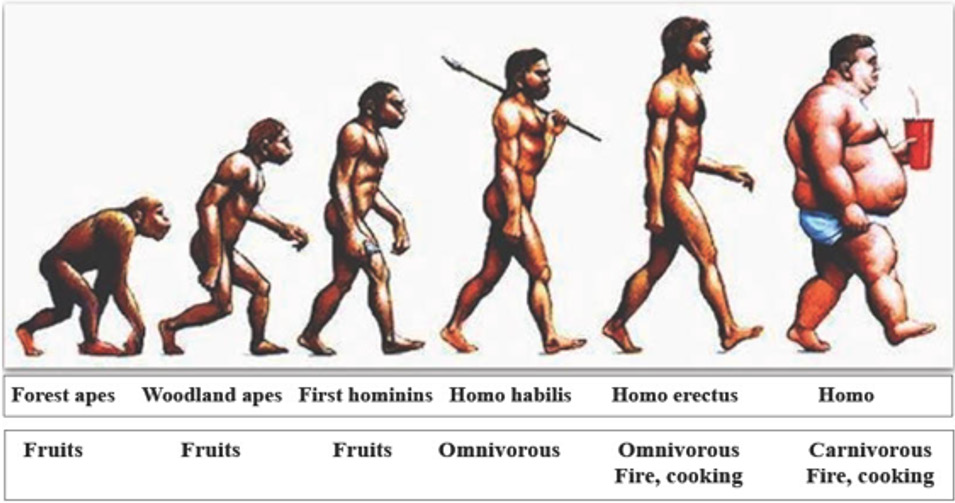
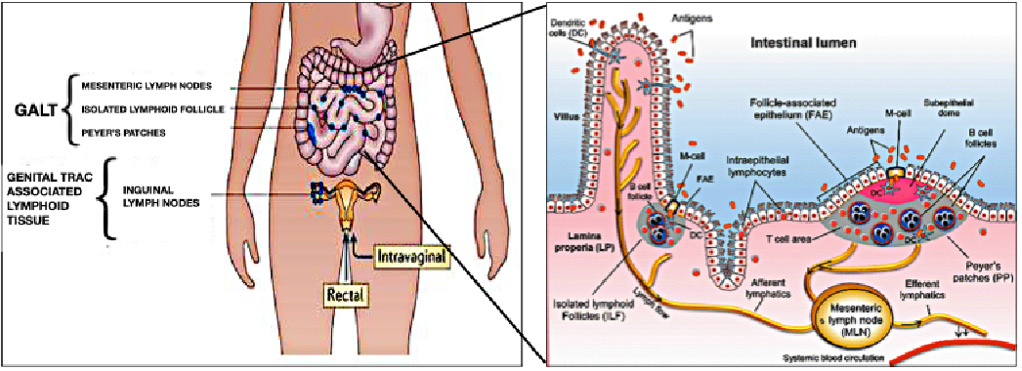
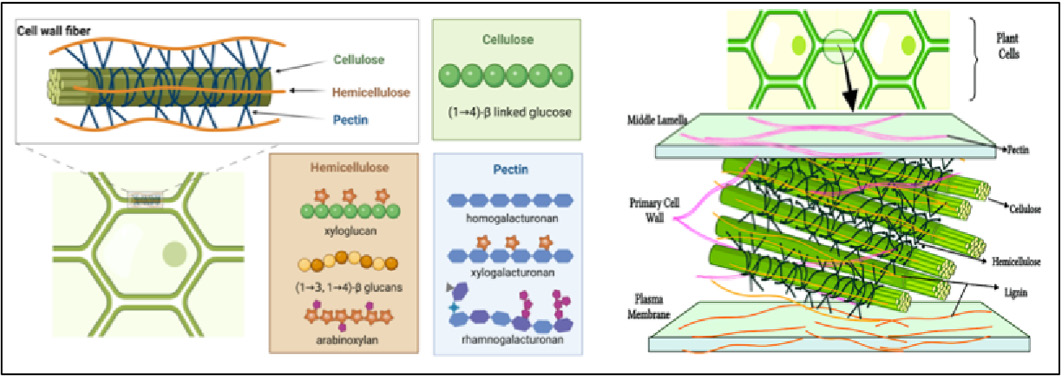
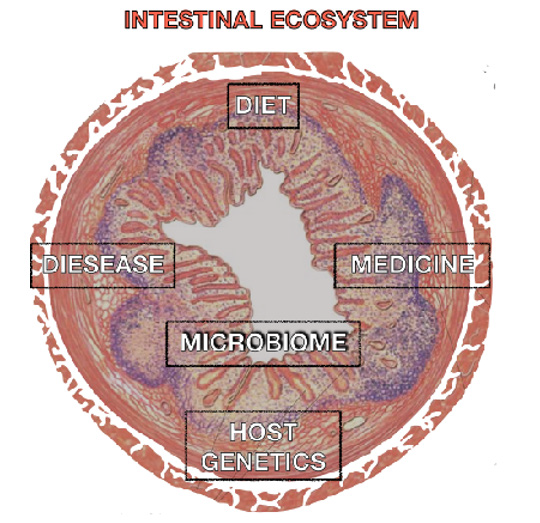
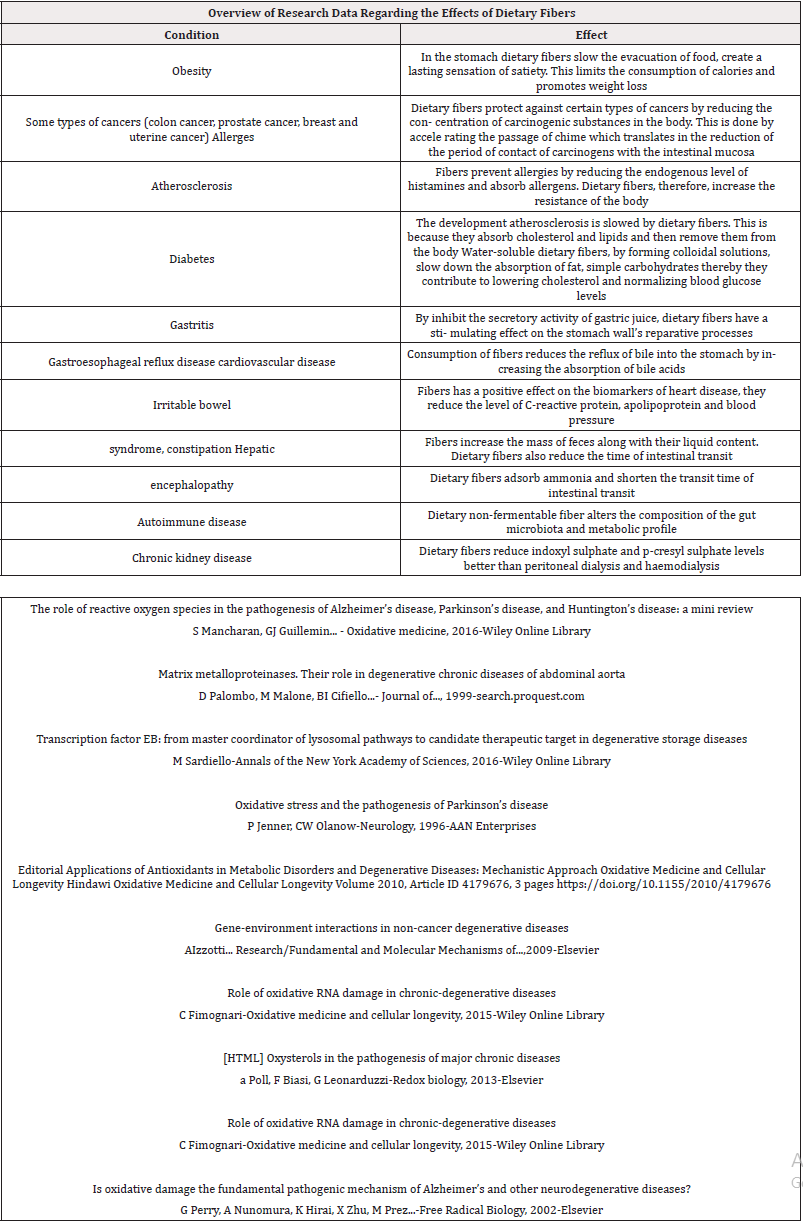


 We use cookies to ensure you get the best experience on our website.
We use cookies to ensure you get the best experience on our website.